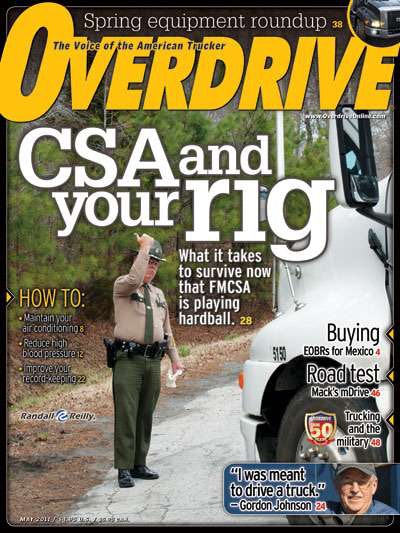
Speaking during a webinar series conducted Nov. 27-29, Vigillo Sales Director Drew Anderson and company Director of Client Services Sloan Morris detailed the CSA changes, most of which Overdrive has covered in prior reporting you can find here.

Various changes to speeding violation weights will also occur and will be retroactive over the two years of carrier inspection histories included in public Safety Measurement System rankings. There will be “no more speeding violations in the 1-5 mph range over” the limit, noted Morris, and if no specific miles-per-hour over the limit “is listed, the violation will be given lowest, 1-point severity weighting,” covering speeding warnings often utilized in probable-cause states as reasons to pull over and inspect a truck.

Improper securement violations will now appear as part of carriers’ Vehicle Maintenance BASIC measures, and in place of the former Cargo Related BASIC, FMCSA is leaving only hazmat-related violations and calling the category the Hazmat BASIC. The severity weights of many securement violations, in turn, have been reduced.
FMCSA has been vocal about scores in the new hazmat category not exhibiting a strong correlation to carrier crash risk but has justified the change by noting the bias the former Cargo Related BASIC had on open-deck carriers, who were overrepresented there. The violations that remain as contributors to carriers’ scores in the Hazmat BASIC are largely to do with placarding errors. “The data is fairly thin,” said Morris, with remaining Hazmat BASIC violations representing only 1.3 percent of the total actual violations recorded in the CSA system. “The former cargo BASIC,” Morris added, was slightly more robust, at “6.3 percent of all violations.”
It is possible, too, for a carrier not subject to the lower BASIC intervention thresholds specified for hazmat carriers to register a percentile ranking in the Hazmat BASIC. Morris cited the example of a 1,900-truck fleet whose primary business is non-hazmat general freight registering a quite high 91.7 score in the Hazmat BASIC, available since early this year in a data preview. “They have only a total of 10 different [Hazmat BASIC] violations over the course of the past two years,” Morris said, and are not subject to lower placardable hazmat intervention thresholds.
FMCSA has agreed to keep the Hazmat BASIC numbers hidden from public view, just as the Cargo-related BASIC has been, for a year as these and other potential anomalies are addressed.
See our reporting from August for more detail on the changes.
You can access slides from Vigillo’s webinar series here.









